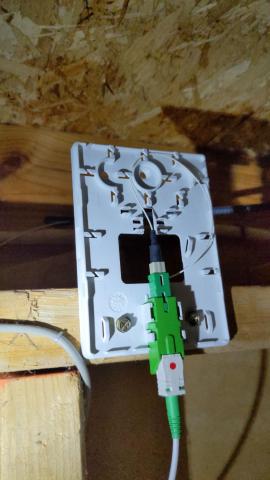In Nov of 2021, I was able to switch off of Cox cable and pickup ATT Fiber. In the Wichita KS market, Cox has dominated and had a monopoly on the area because no-other companies wanted to spend any money to directly compete with Cox cable. Until recently.
Initially after getting ATT Fiber, the connection seemed rock solid. Until it wasn't. I started having the dreaded 'frequent intermittent disconnects' like so many other people. There are countless horror stories in the ATT forums and on Reddit from folks all over the country with the exact same problem. I've see this issue in posts anywhere from a month ago, all the way back 4+ years.
Here's a few examples of the hundreds of posts talking about frequent disconnects to show what I'm talking about:
https://forums.att.com/conversations/att-fiber-equipment/att-fiber-frequ...
https://forums.att.com/conversations/att-fiber-equipment/frequent-discon...
https://forums.att.com/conversations/att-fiber-equipment/fiber-gateway-d...
https://forums.att.com/conversations/att-fiber-equipment/new-customer-fi...
Trying to track the problem down myself, I figured maybe it was because of the new Nokia BGW320 modem, specifically the limited NAT table which off the top of my head, I believe is limited to 8MB. The NAT wasn't it, even though the BGW320 doesn't properly do ip passthrough and fills the NAT table up... (Turns out the NAT table is plenty big on the 320)
I suffered daily, sometimes for weeks with the internet being intermittent. It was getting so bad at times that streaming media was running out of buffer and cutting out. Let's not even discuss gaming which basically became a past-time.
What's weird is that it would act up, then clear up all on its own... It would last for a day, several days or sometimes several weeks and then just magically clear up.
Finally after some pretty frustrating days of the connecting dropping out, I dug into the forums and read as much as I could get my hands on. I finally ran across THE post that pointed me in the right direction: https://forums.att.com/conversations/att-fiber-equipment/att-fiber-drops...
It was here that I discovered that the fiber lines are way more susceptible to bends than what I think even ATT understands... Sure, there's mathematical formulas and specifications that tell you exactly what the radius of a fiber bend can be but what I've decided through my own educated guess is that the wall plate ATT uses for installs is a horribly designed wall plate. My guess is that the early days of ATT rolling out fiber, they specced out and tested one manufacturers fiber line and made all of their SOPs (Standard Operating Procedures) based on this initial fiber line. Over time, ATT wanted to cut costs so they sourced a different manufacturer and with that comes a host of different problems that are unforseen with out proper testing. So, the guess is that the wall plate being used was fine for their initial lab tests but hasn't been re-tested since with the change of materials used. Again, it's all a guess. I'm telling myself a story that I will probably never know is true or not, so take what I've said with a grain of salt.
In my testing, I did a ping test to both Google and as suggested by that one guy on the ATT forums who doesn't work for ATT, but seems to somehow have the time to comment on pretty much every single post, I did a ping test to the next hop after my modem and every single time the drop was at the modem. Sure, there were rare times when pinging Google that I got a few drops en-route which is to be expected, but the testing I did led to the direct coorellation that there was a problem between my modem and whereever the next hop is. I don't know if ATT puts L3 switching in the nodes themselves or if it's purely just L1 cabling with some L2 connection devices so I can't say exactly where the break might have been if it didn't turn out to be the fiber line.


Post Comment